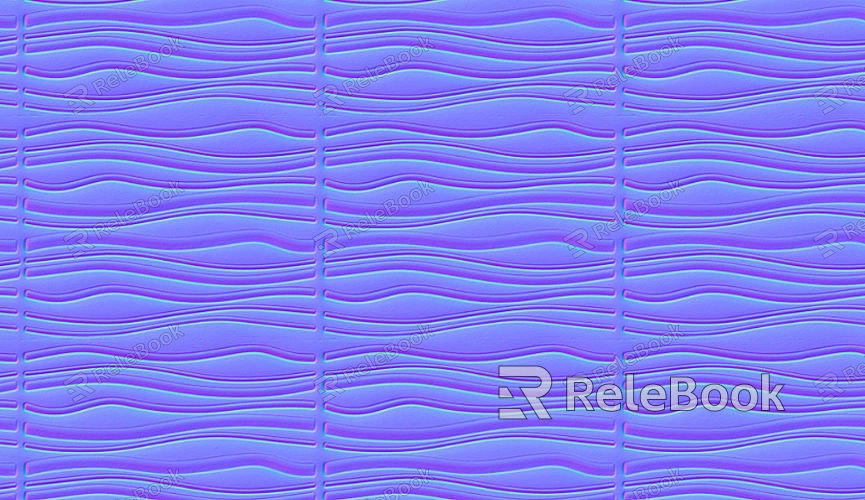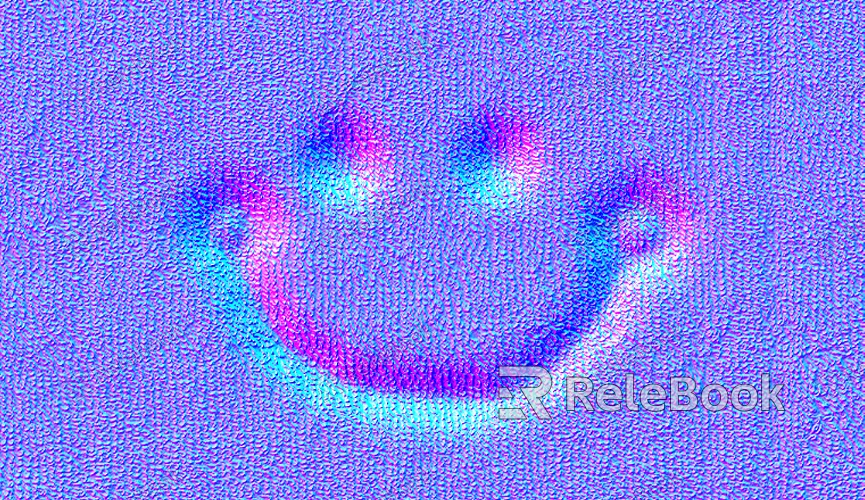What Does the Bump Map Do?
Bump mapping is a widely used technique in 3D rendering that allows designers to simulate surface detail and texture without the need to increase the model's complexity or geometry. By manipulating how light interacts with a surface, bump maps create the illusion of depth and intricacy, such as cracks, roughness, or other features. While the underlying geometry remains unchanged, the visual impact can be remarkable, enhancing the realism of a scene. This article will explore how bump maps work, how they are used, and why they are an essential tool for 3D modeling.

The Mechanism of Bump Mapping
At the heart of bump mapping is the concept of normal vectors. Normals are directional vectors perpendicular to a surface, and they are crucial for determining how light interacts with it. Bump maps work by altering these normals across a surface. A bump map itself is a grayscale image, where each pixel represents how much the normal of that surface should change.
In a bump map, lighter areas simulate raised sections of the surface, while darker areas indicate recessed regions. When applied to a 3D model, these variations in the bump map make the surface appear to have more detail and texture. However, the surface geometry itself remains unchanged; only the lighting effects are modified. This makes bump mapping a highly efficient technique, especially when dealing with large or complex scenes where adding extra detail would be computationally expensive.
Types of Bump Maps
There are several different types of bump maps, each offering unique advantages and uses. These include:
Standard Bump Maps: The traditional form of bump mapping where a single grayscale image controls the apparent height of surface details. This method is simple and computationally efficient, making it ideal for many applications.
Normal Maps: Normal mapping is a more advanced form of bump mapping that uses an RGB image to encode more detailed normal information. This allows for more complex surface features and lighting effects, making normal maps more suitable for high-end graphics where fine details are necessary.
Height Maps: Unlike bump maps, height maps store actual height information for each point on a surface. While bump maps only simulate depth visually, height maps can be used to modify the actual geometry of a 3D model, making them more resource-intensive but capable of producing true depth.
Each type of bump map has its own strengths and is chosen based on the requirements of the project and the desired level of realism.

Applications of Bump Mapping
Bump mapping has many practical applications across a wide range of industries, particularly in fields that rely heavily on 3D graphics and modeling. Some of the most common uses of bump mapping include:
Architecture and Interior Design: In architectural visualization, bump maps are frequently used to simulate the texture of materials such as wood, stone, or concrete. These maps help create realistic representations of surfaces without increasing the complexity of the model. Whether it's for interior design projects or architectural walkthroughs, bump maps enhance the detail of surfaces like walls, floors, and furniture.
Product Design and Marketing: In product visualization, bump maps are used to enhance textures like leather, metal, or fabric, giving products a realistic, tactile appearance. This helps designers and marketers present products in a way that appears more polished and professional. By simulating fine surface details, bump maps can make products look more appealing in digital renderings or online catalogs.
Simulating Natural Surfaces: Bump maps are also widely used to simulate natural surfaces like terrain, water, and vegetation. By applying bump maps to simulate the texture of soil, rocks, or waves, designers can create visually rich and immersive environments without the need for extensive geometry.
The Benefits of Bump Mapping
Bump mapping offers several significant benefits that make it a preferred technique for adding surface detail to 3D models:
Efficiency: One of the biggest advantages of bump mapping is its efficiency. Since it doesn't require adding more geometry, bump mapping allows designers to simulate complex textures without significantly increasing the computational load. This makes it an ideal choice for real-time applications such as architectural walkthroughs or virtual environments.
Visual Realism: Bump maps provide a high level of visual realism by simulating the way light interacts with textured surfaces. Small imperfections, such as scratches or wrinkles, can be convincingly represented, adding depth and detail to the model without the need for more polygons.
Customization: Bump maps are versatile and can be customized to suit the needs of the project. Designers can create their bump maps based on photographs or other texture sources, ensuring that the visual effects match the specific requirements of the scene or product being designed.
Limitations of Bump Mapping
Despite its advantages, bump mapping does have some limitations. These include:
No Physical Depth: While bump maps create the illusion of depth, they do not change the model's geometry. This means that any interactions with the surface, such as collisions or physical simulations, will not reflect the bumps and ridges depicted in the bump map.
Limited to Surface Detail: Bump maps can only simulate surface features and cannot affect the internal structure of a model. For more complex effects, such as actual changes in the geometry or depth of a surface, other techniques like displacement mapping may be necessary.
Visual Artifacts: If not properly created or applied, bump maps can sometimes produce visual artifacts, such as visible seams or unnatural lighting effects. To avoid this, bump maps need to be carefully crafted and tested to ensure they integrate seamlessly with the model.
Best Practices for Using Bump Maps
To make the most of bump mapping, it's essential to follow some best practices:
Ensure Proper Resolution: The resolution of the bump map should match the resolution of the model's texture to avoid blurry or pixelated details. Higher-resolution bump maps provide more intricate details, but they also require more memory and processing power.
Use Subtle Effects: While bump maps can create realistic texture details, it's important not to overdo it. Excessive bump mapping can make the surface look unnatural or exaggerated. Subtle bump maps often yield the best results, giving surfaces just the right amount of texture without drawing too much attention to the effect.
Test in Various Lighting Conditions: Since bump maps rely on how light interacts with the surface, it's important to test them under different lighting conditions. This ensures that the bump map produces the desired effect in various environments and lighting setups.
Bump mapping is a powerful technique for adding surface detail and texture to 3D models without increasing computational complexity. By manipulating surface normals, bump maps create the illusion of depth and intricate surface features, making them essential for industries like architecture, product design, and digital marketing. While it has limitations, such as not altering the actual geometry of a model, its efficiency and visual realism make it an indispensable tool for 3D designers. For those looking to enhance their projects with realistic textures, Relebook offers a variety of 3D models and textures that can elevate your work to the next level.
FAQ
Can bump mapping affect the geometry of a 3D model?
No, bump mapping only affects the way light interacts with the surface, not the actual geometry. It creates the illusion of depth but does not change the model’s shape.
Is bump mapping suitable for real-time applications?
Yes, bump mapping is particularly useful for real-time applications like games or architectural visualizations because it provides detailed textures without adding more polygons, keeping performance high.
How does bump mapping differ from displacement mapping?
While bump mapping simulates depth by altering surface normals, displacement mapping modifies the geometry of the model. Displacement mapping produces true depth and is more computationally expensive.
Can bump maps be used in product design visualization?
Yes, bump maps are commonly used in product design to simulate textures like fabric, leather, and metal, making the products look more realistic in digital renderings.

